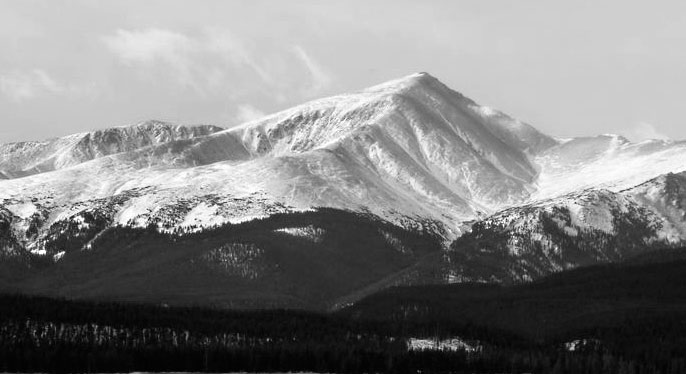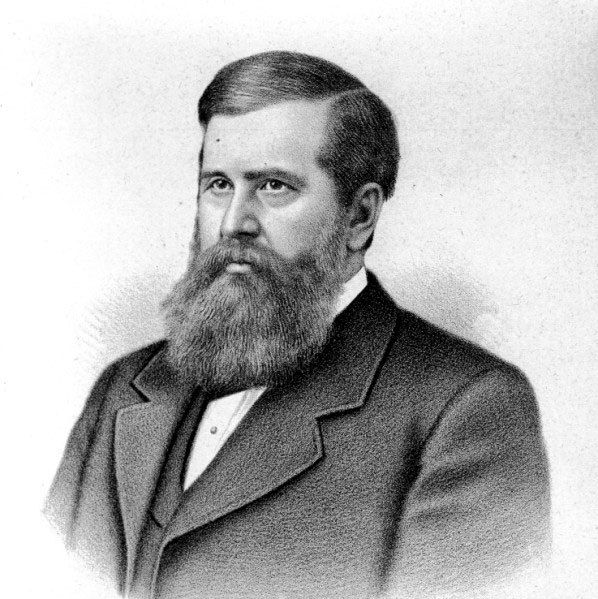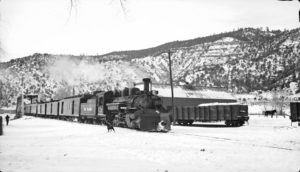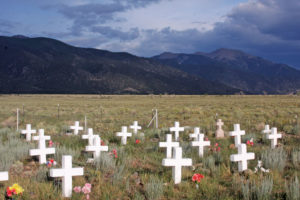First Published in Colorado Central Magazine, May 1998
By Ed Quillen
 Samuel Hitt Elbert, whose name adorns Colorado’s highest peak, was born in Ohio on April 3, 1833. He grew up in Iowa and was graduated with honors from Ohio Wesleyan University in 1854. He then studied law and was admitted to that state’s bar in 1856.
Samuel Hitt Elbert, whose name adorns Colorado’s highest peak, was born in Ohio on April 3, 1833. He grew up in Iowa and was graduated with honors from Ohio Wesleyan University in 1854. He then studied law and was admitted to that state’s bar in 1856.
Elbert soon settled in Portsmouth, Nebraska, where he became active in the new Republican Party, serving as a Lincoln delegate to the 1860 convention and then in the Nebraska Legislature. In 1862, his political connections got him a patronage appointment from President Abraham Lincoln: Territorial Secretary of Colorado. This was the second-highest office in the territory.
In 1865, Elbert married Evans’ daughter, Josephine, and went into private law practice. But he maintained his political interests and was elected to the territorial assembly in 1869. Elbert advocated government subsidies for irrigation, invested in mines in the Independence Pass area, and lobbied for the mineral-patent policies that became the General Mining Law of 1872.
President Ulysses S. Grant appointed Elbert the governor of the territory in 1873, and Elbert’s actions in that office put his name on the mountain.
At issue was the Western Slope of Colorado, then set aside by treaty for the Utes. Prospectors often trespassed, and one result was the discovery of gold and silver in the San Juans. As word got out, a rush was on.
The Utes understandably wanted the trespassers expelled. The Indian Bureau asked Gen. John Pope to send in soldiers to evict the miners, and Pope began organizing an expedition.
President Grant visited Denver in the spring of 1873 and met with Elbert. After the meeting, Grant rescinded Pope’s order. Instead of honoring the old treaty with the Utes, the federal government would engage Otto Mears to negotiate the Brunot Treaty, which forced the Utes to cede the San Juans.

The Rocky Mountain News credited Gov. Elbert for persuading Grant to open the San Juans to mining. Miners and prospectors in Twin Lakes were so pleased with the governor that in June of 1873, half a dozen of them gathered, took a shiny new tin dinner plate, and inscribed the soft metal with: “ELBERT PEAK, named and dedicated to our governor for the interest which he has manifested in our behalf in having the San Juan order rescinded.”
A few weeks later, they climbed the massif, built a cairn of stones at one of its summits, and placed the tin plate inside. The plate was seen by a member of the Hayden survey later that summer, but hasn’t appeared since.
Samuel Elbert’s political enemies inside the Republican Party persuaded Grant to remove him from office in 1874, after serving less than a year as governor. After Colorado became a state in 1876, Elbert went on to serve several terms as chief justice of the state supreme court (an elected position then), and contemporaries of both parties praised his sense of justice and the clarity of his written opinions.
Elbert’s personal life was marred by an 1868 tragedy that took the life of his wife and their only child; he never remarried. He left the court in 1889, and died on Nov. 27, 1899.
[InContentAdTwo]
It should be noted that, during Elbert’s lifetime, either Mount Massive or Mount Harvard was considered the highest peak in Colorado. Later surveys with more sophisticated instruments, conducted after the turn of the century, put Elbert on top.



